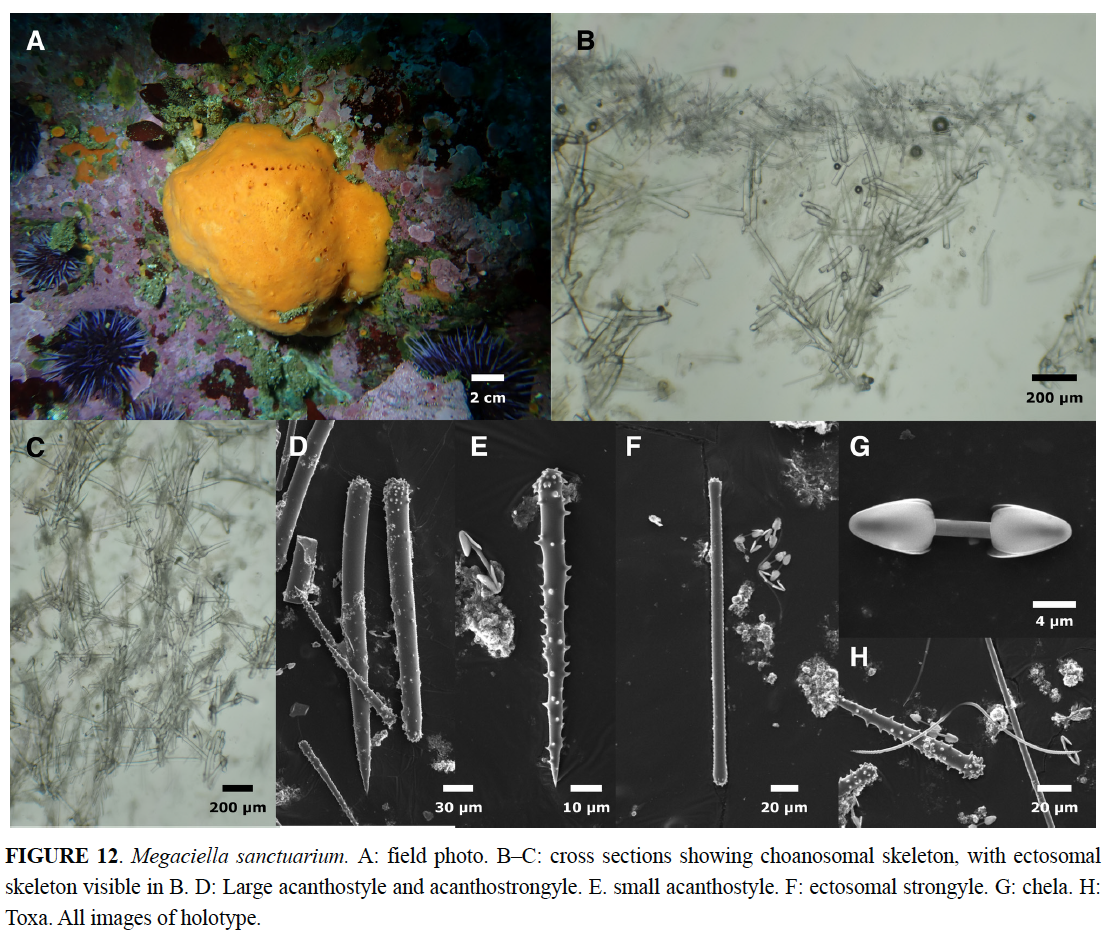A newly discovered sponge, Megaciella sanctuarium, has been named in honor of Monterey Bay National Marine Sanctuary, which protects an abundance of biodiversity, particularly among invertebrates, including sponge species. Scientists recently published the scientific description.
The new species of sponge was discovered in the sanctuary in fall of 2021 during a research cruise aboard the sanctuary’s 22-foot small boat, the R/V Tegula. Dr. Tom Turner, a professor and sponge expert from U.C. Santa Barbara, dove with Dr. Steve Lonhart, a research ecologist for Monterey Bay National Marine Sanctuary.
“It is amazing to me that new species are still being discovered within normal diving depths,” said Dr. Lonhart, a co-author on the paper. “After diving in central California since 1988, I realize there is still so much to discover, and Dr. Turner is really exposing the incredible biodiversity of sponges found right here in our very own sanctuary.”
In the Carmel Pinnacles State Marine Reserve, a marine protected area nested within the sanctuary, Turner collected small sponge samples from various depths, photographing each beforehand, and then later analyzing the samples for both structure and genetics. Turner has been granted a special scientific collecting permit from the California Department of Fish and Wildlife to collect these samples throughout California.
Twelve of 29 sponges sampled were not previously described, and Turner named all 12 new species. According to the paper, “Several of the species appear to be rare and/or have very restricted distributions, as they were not found at comparative survey sites outside of Carmel Bay.” In addition to Megaciella sanctuarium being named after the sanctuary, Turner named one sponge species after the indigenous Rumsen people of Monterey, one after the town of Carmel, and one after nearby Point Lobos.
The full scientific paper, “The Sponges of the Carmel Pinnacles Marine Protected Area” by Turner and Lonhart, was published in Zootaxa, and can be accessed online at https://mapress.com/zt/article/view/zootaxa.5318.2.1
